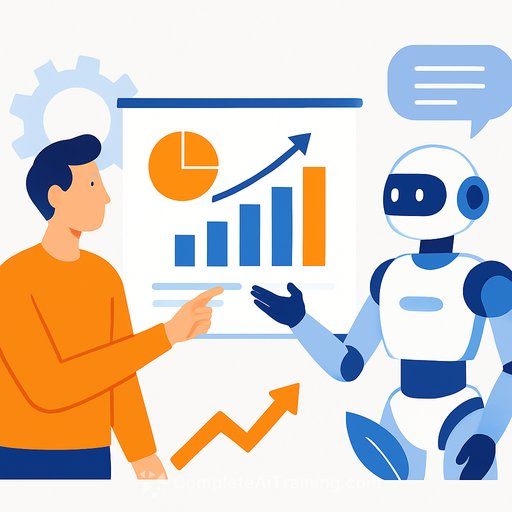AI won't replace marketers. Marketers who use AI well will win.
Every new wave of tech comes with the same fear: machines will take the jobs. History keeps proving something else-work changes shape, but it doesn't vanish. The next two decades won't be about AI versus humans. They'll be about leaders who deploy AI with clarity, guardrails, and intent.
What changes, what stays
- Strategy stays human. Machines can't set direction. You decide the segment, the offer, the bet.
- Taste and voice stay human. AI drafts fast. You define what feels right for the brand.
- Trust stays human. Privacy, consent, and clear claims matter more as automation scales.
- Execution changes. Research, drafting, analysis, and optimization get faster and cheaper.
Where machines should work for you
- Research synthesis: Turn messy notes, calls, and reviews into clean insights and themes.
- Audience analysis: Cluster segments, pain points, and objections from CRM and survey data.
- Content first drafts: Outlines, briefs, and variant ideas that your team refines.
- Creative variation: Headlines, CTAs, and visual prompts for A/B and multivariate tests.
- Media and spend ops: Budget pacing, anomaly alerts, and suggested bid/tactic shifts.
- Reporting: Auto-generate weekly insights with callouts, not just dashboards.
- Lifecycle triggers: Behavioral emails, sequences, and win-back flows with smart rules.
A practical operating system for AI-first marketing
- 1) Define outcomes: Pick 3 metrics that matter (CAC, LTV, pipeline velocity). Set baselines.
- 2) Map workflows: Break your funnel into steps. Note where work stalls or costs pile up.
- 3) Choose tools by job-to-be-done: Evaluate on accuracy, data privacy, integration, latency, unit cost.
- 4) Build prompt + checklist libraries: Reusable briefs, brand voice rules, and QA steps.
- 5) Guardrails: Approval paths, claim standards, PII policies, and model usage rules.
- 6) Pilot fast: Two-week sprints. Compare against last month's baseline. Keep what moves the number.
- 7) Upskill the team: Pair people with automations. Document what works. Share wins weekly.
- 8) Governance: Log prompts, outputs, and results. Review for bias, hallucinations, and brand drift.
The talent mix that scales
- T-shaped marketer: Owns the customer and the outcome. Uses AI to speed research and messaging.
- Marketing ops lead: Connects tools, data, and workflows. Keeps the system stable.
- Analyst with product sense: Turns data into decisions, sets testing cadence, audits model outputs.
- Creative strategist: Sets the narrative, frames ideas, ensures taste and clarity.
Metrics that matter
- Cycle time: Brief-to-publish hours per asset.
- Cost per asset: True all-in production cost.
- Quality rate: Percent of drafts accepted without major rewrites.
- Attribution uplift: Incremental revenue tied to AI-assisted campaigns.
- Experiment tempo: Tests launched per week and win rate.
What to stop doing
- Starting from a blank page for every asset.
- Running long brainstorms without a brief, examples, or constraints.
- Letting approvals bottleneck work with unclear standards.
What to start this week
- Create a brand kit: Voice, claims you can make, claims you won't, proof sources.
- Centralize knowledge: Product FAQs, past winners, objections, and case studies in one doc.
- Draft 10 prompts: Research summary, persona snapshot, outline, headline variants, offer angles.
- Automate one report: Weekly performance summary with insights and next actions.
- Ship one pilot: A/B test AI-generated variants against your current best performer.
Why this approach works
History suggests work shifts, then grows. As tools improve, demand for skilled marketers tends to rise because better targeting and cheaper production open new segments and formats. The edge goes to teams that keep judgment at the center and let machines handle the repetitive parts.
For context on job trends vs automation, see the latest research from the Future of Jobs Report.
Final note for marketing leaders
Your job is simple to state, hard to do: pick the few places AI will compress time-to-value, set clear rules, and measure the lift. Keep people on the strategic, creative, and ethical calls. Let machines grind the rest.
If you want a structured path to upskill your team fast, explore this AI certification for marketing specialists.
Your membership also unlocks:






